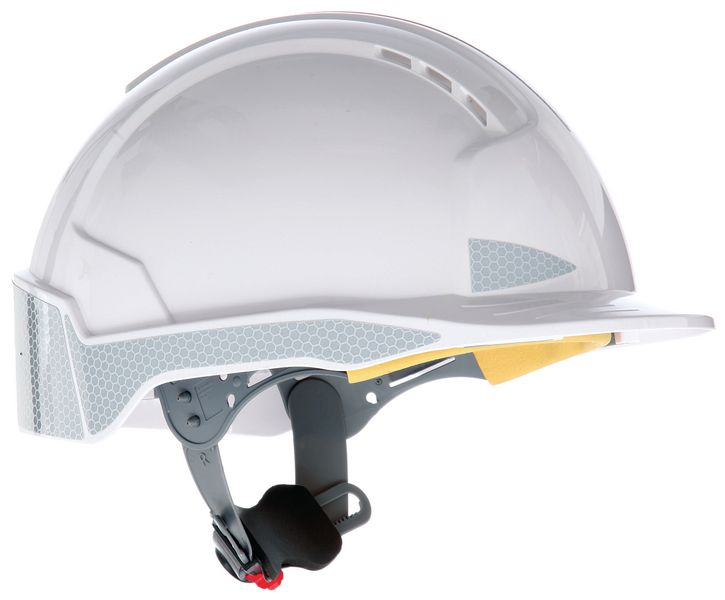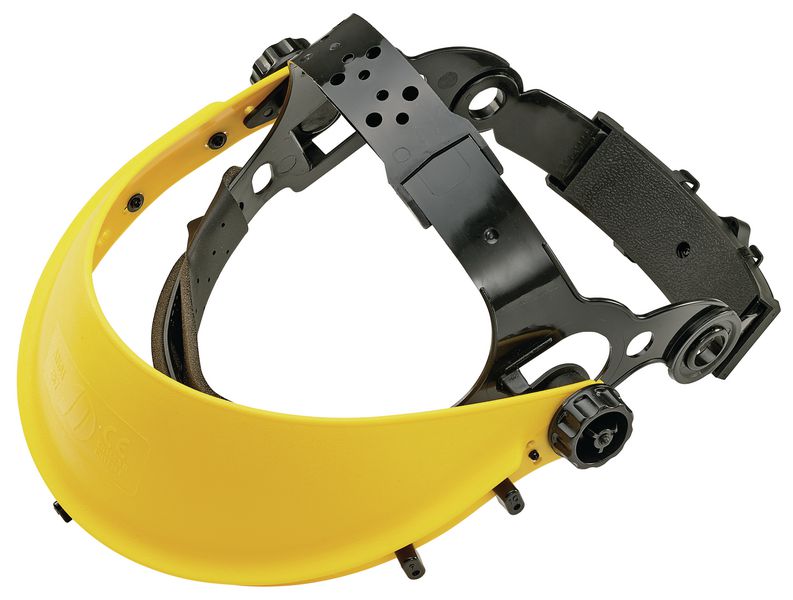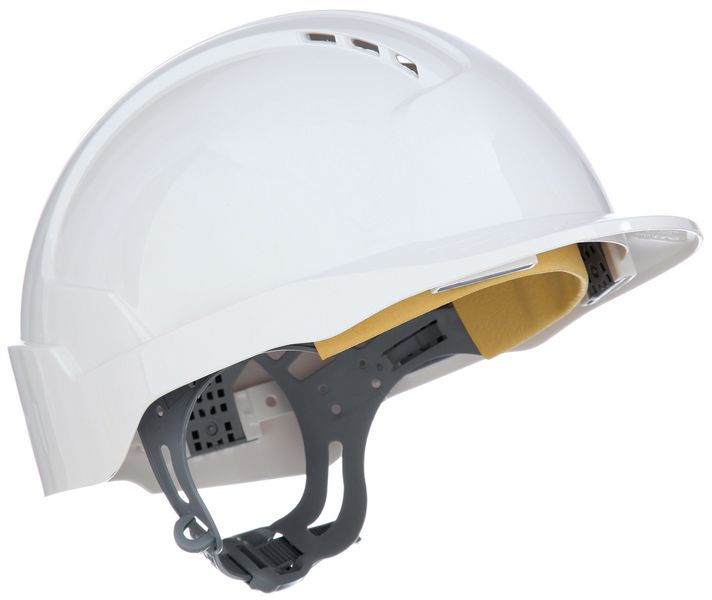-

Bollé® Sphère™ Face Shield
From £14.99 To £18.99Supplied in: Single -

Baseball Bump Cap
£8.99Supplied in: Single -

Honeywell Bionic Face Shields
From £29.98 To £46.99Supplied in: Single -

JSP® Evolite® CR2™ Safety Helmet
From £18.51 To £22.62Supplied in: Single -

Delta Plus Safety Helmet - ZIRCON1
£4.99Supplied in: Single -

JSP® Premium Bump Cap
From £16.99 To £27.79Supplied in: Single -

JSP® Evo2® Safety Helmet
From £6.11 To £6.25Supplied in: Single -

Scafftag® - Workers Emergency ID Tags
£7.99Supplied in: Single -

JSP® Standard Polycarbonate Face Shields
£19.99Supplied in: Single -

Lightweight Face Shield
£7.99Supplied in: Single -

JSP® EVO3® Safety Helmet
From £11.99 To £15.99Supplied in: Single -

JSP® Evolite® Linesman® Safety Helmet
£25.23Supplied in: Single -

Delta Plus Mountain Helmet
£26.99Supplied in: Single -

Honeywell Bionic Face Shields - Replacement Visors
From £11.99 To £20.08Supplied in: Single -

Headgear Carriage
£4.99Supplied in: Single -

Clear Visor
£2.60Supplied in: Single -

Thinsulate Black Beanie Hat
£6.77Supplied in: Single -

JSP® Helmet Chin Straps
£32.99Supplied in: Pack of 10 -

Magnetic Hook for Safety Shoes or Hard Hats
£23.99Supplied in: Single -

JSP® Evolite® Vented Safety Helmet
From £11.99 To £17.89Supplied in: Single -

Delta Plus Ventilated Safety Helmet
£9.99Supplied in: Single -

Delta Plus Rotor Adjustment Safety helmet
£9.99Supplied in: Single -

Baseball Cap Safety Helmet
£12.99Supplied in: Single -

JSP® Evolite® Micropeak Helmet
£17.99Supplied in: Single -

JSP® EVO8 Evolution® Safety Helmet
£42.99Supplied in: Single -

Delta Plus Bump Cap
£19.50Supplied in: Single -

Uvex Pheos B-S-WR Safety Helmet
£62.99Supplied in: Single -

Ergodyne N-Ferno® 6821 N-Ferno Balaclava
£8.99Supplied in: Single -

JSP® Helmet Visors
£11.99Supplied in: Single -

JSP® Helmet Visor Carrier
£14.99Supplied in: Single
Head Protection
Need help?
 How do I make sure headwear continues to save lives?
Find the Head Protection Gear You Need – Quick Delivery
How do I make sure headwear continues to save lives?
Find the Head Protection Gear You Need – Quick Delivery
Protecting your employees’ heads is critical in many settings, such as on construction sites, and in many circumstances it is a legal necessity with regards to health and safety. At Seton, we understand how vital it is to have protective headwear that not only has the appropriate safety features but is also comfortable to wear.
We stock a range of head protection products that are suitable for different environments and tasks, including safety helmets, bump caps and safety shields. However, it is essential to select the right type and style of headwear protection, to ensure it is suitable for the risks your employees face
Also discover:
PPESafety glovesFall arrest system Eye ProtectionEar defendersBreathing protectionSafety footwearSafety helmetBump CapsHelmet chin strapsFace Shields
Guide To Buying Head PPE
On construction and industrial sites up and down the country, hard hats and other forms of protective headwear are a common sight, and they have become an essential part of a worker’s personal protective equipment (PPE) kit. For those who operate in situations where objects are at risk of falling from height, or they can be hit by low or moving parts, head protection is necessary.
It might only be a small and inexpensive item, but the appropriate head protection can save a life or prevent serious injury, including spinal problems.
As well as ensuring employees have the right safety headwear, companies that operate in high-risk environments should also be mitigating the chance of accidents occurring. This includes planning the site carefully, the use of scaffolding with toe boards to prevent objects from falling and brick guards if these are necessary.
However, these can’t completely eradicate the risk of injury, so head protection should still be worn to increase safety.
Safety Headwear Buying Guide
When you’re selecting safety headwear, it’s important to understand that not all hats are the same, and they won’t all have the features that you need.The first area that you should be factoring in is the fit of the helmet. It is vital that it is worn correctly at all times - it won’t matter what extra safety features it includes as it won’t protect a worker’s head in the right way if it is not fitting securely, and it will also be uncomfortable.
Most protective headwear can be adjusted in small increments to create a secure fit, which allows air to circulate, and the impact of a force will be distributed correctly to minimise injuries.
In some environments, you will require additional accessories on headgear, such as safety glasses, face shields, ear muffs, head lamps or radios. These should be fitted properly so they don't obstruct the protection offered by the helmet.
A chin strap is an essential element of protective headwear if you’re working from height or close to a pit edge, to prevent it from falling off and injuring someone else.
Maintaining Protective Headwear
Once you’ve bought the appropriate safety headgear, it’s also necessary to keep it well maintained and check it regularly for any signs of deterioration. Damaged helmets will not provide the same level of protection, so helmets should be inspected at the start and end of every shift, including the shell, accessories and harness.Damage can occur to a helmet if objects drop onto the shell or strike it, and when it has been thrown or dropped. Where there is visible damage to a safety helmet, or if it’s had a serious impact, it must be replaced immediately as this could have decreased the penetration resistance or shock absorption.
When helmets are not in use, they need to be stored safely and out of direct sunlight or hot and humid environments. If any parts are found to be damaged, they should be replaced before it is used, and the sweatband needs to be cleaned or replaced frequently.
If a safety helmet is being issued to someone else, it should first be checked to make sure that it is in correct working order and cleaned in the appropriate manner.
